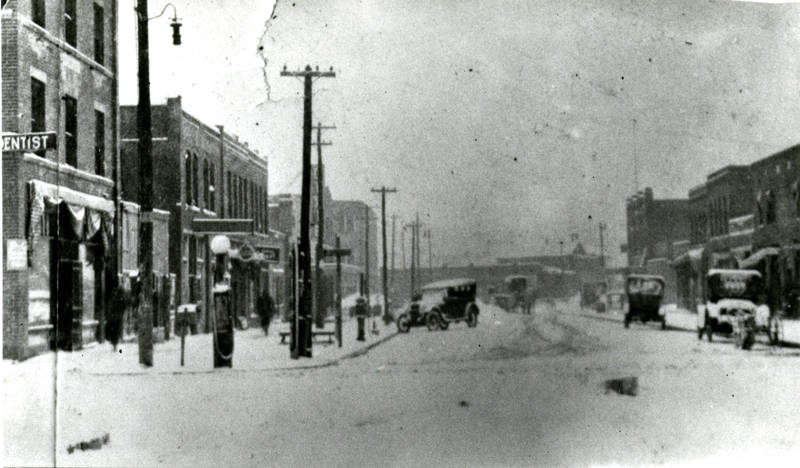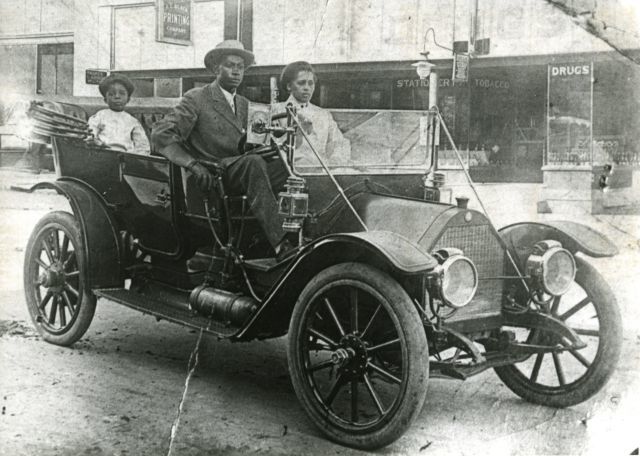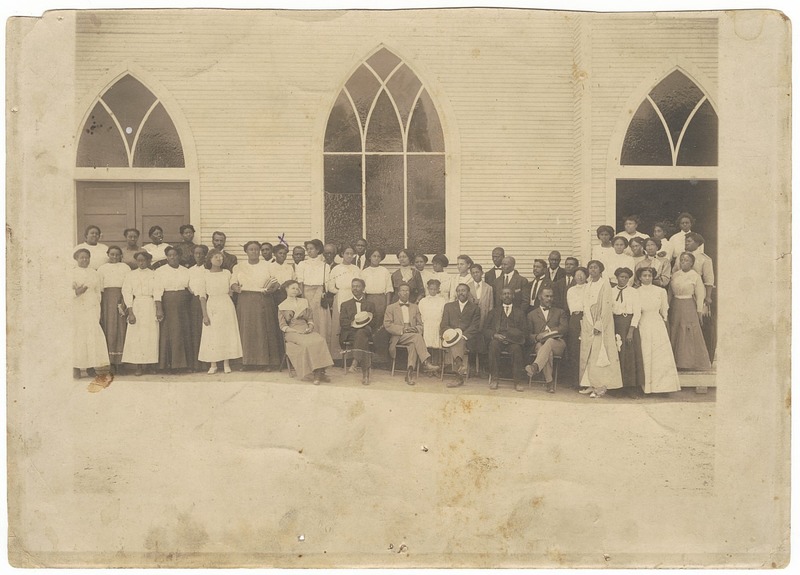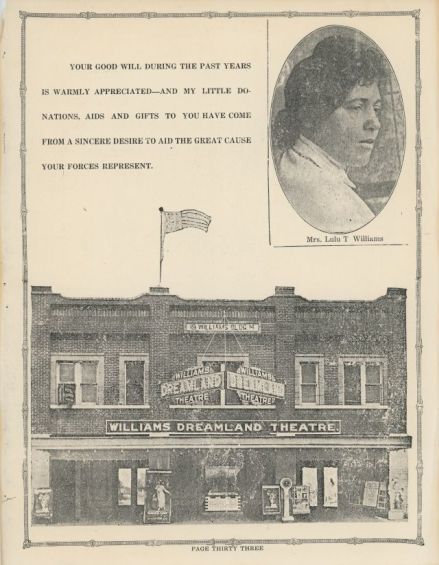Black Wall Street
These images capture the center of African-American economic, social, and spiritual prosperity in the face of Jim Crow Tulsa, Oklahoma of 1919, Black Wall Street. Black people, many of whom accompanied the forced migration of the Chickasaw, Choctaw, Cherokee, Creek, and Seminole Native American Tribes in the 1830s and 1840s inhabited Oklahoma long before any white settler. Following the American Civil War, many African-Americans fled to Oklahoma for life beyond hatred’s reach, namely Jim Crow laws and white lynching mobs of the American South. Hannibal B. Johnson, in his book, Black Wall Street: From Riot to Renaissance in Tulsa’s Historic Greenwood District, claimed that “Oklahoma boasted more all-black towns and communities than any other state,” the oldest, Tullahassee, being founded as early as 1859 (Johnson, 13-14). Many African-Americans participated in the Oklahoma Land Run of 1889, and some were fortunate enough to obtain land that gushed oil, the state’s leading export. In the face of Jim Crow America, a group of African-American landowners and entrepreneurs, showing resilience, pooled their resources and transformed an economic spirit into a strong and prosperous community known as Black Wall Street, or the Greenwood District, just north of the Frisco Railroad tracks in Tulsa, Oklahoma.
Despite their intention to uphold white supremacy, Oklahoma's Jim Crow segregation laws did not stop Black Tulsans from prosperity. Instead, the laws created a symbiotic relationship between the two communities on either side of the Frisco Railroad tracks. Tulsa heavily depended on the Greenwood community for labor power but legally barred them from engaging in purchasing goods or services in the city. Thus, Black Tulsans built milliners, grocery stores, beauty parlors, tailors, movie houses, dance clubs, schools, churches, law offices, medical offices, dentist offices, and more north of the tracks.
This image of a Tulsan, Dr. A.C. Jackson, exemplifies the level of achievement common to members of the Greenwood community. NAACP Assistant Secretary Walter White reported in The Nation that Dr. Jackson had an estimated net worth of $100,000. According to White, Dr. Jackson received his education by the Mayo brothers who described him as "the most able Black surgeon in America," moreover, he crossed racial barriers as white Tulsans received their care from Dr. Jackson because of his medical and surgical prowess.
The Greenwood community bolstered a collective economic spirit with resilient determination for success. Black Wall Street, Greenwood Avenue in Tulsa, Oklahoma, created a life unknown to African-Americans at the turn of the century. The Williams family story illustrates the resilience and life created north of the Frisco Railroad tracks. John and Loula Williams exercised their freedom by leaving the terroristic practices of racist communities in the Deep South. The couple chose Tulsa, Oklahoma, to live in peace and prosperity, free to own property and accumulate capital. John Williams, a mechanic by trade, opened Williams' One Stop Garage on Archer Street. Due to his mechanical genius, the garage was an instant success and earned patronage from the wealthy oilmen of Tulsa. Loula Williams was the entrepreneur of the couple and with the profits from the garage she used to erect the three-story brick building known as Williams' Confectionary, a Greenwood social hot spot. Moreover, by 1914, the couple opened the Williams’ Dreamland Theater, in which all community members enjoyed a multiplicity of entertainment, and the couple enjoyed the profits of their labor. Below is a page from the Booker T. Washington High School 1921 yearbook dedicated to Loula Williams. The image depicts a portrait of Mrs. Williams above a photograph of the Williams' Dreamland Theatre on Greenwood Avenue, Tulsa, Oklahoma. This item expresses recognition of Loula Williams as an exemplary human being and her status in the Greenwood community as a proponent of education, entrepreneurship, and philanthropy. John and Loula Williams were the first Black Tulsans to own an automobile. There was little that systemic racism and white supremacy could do about it.



